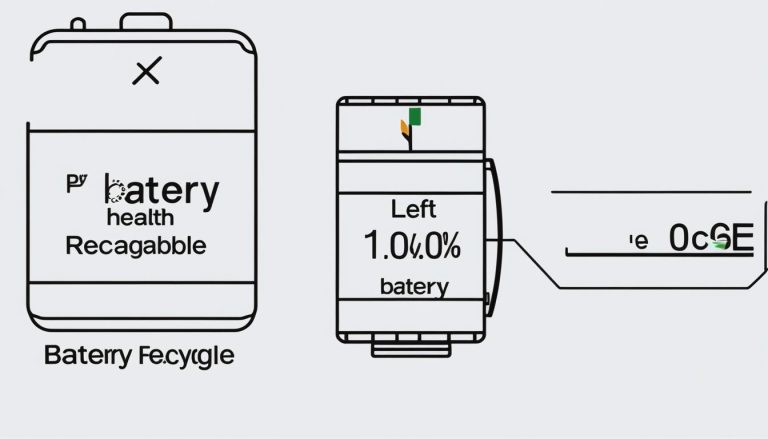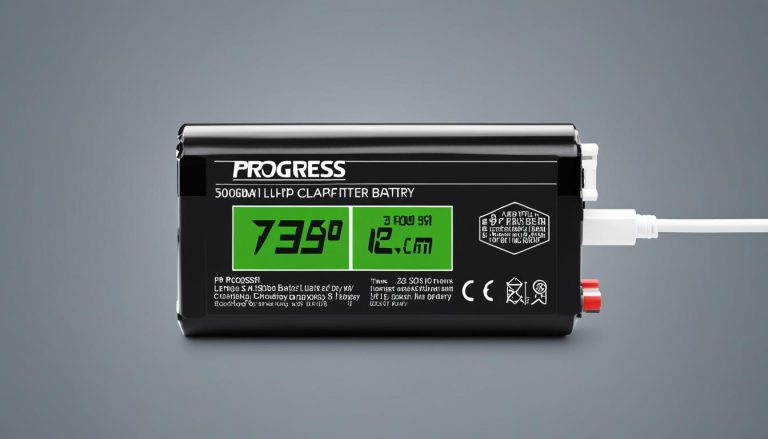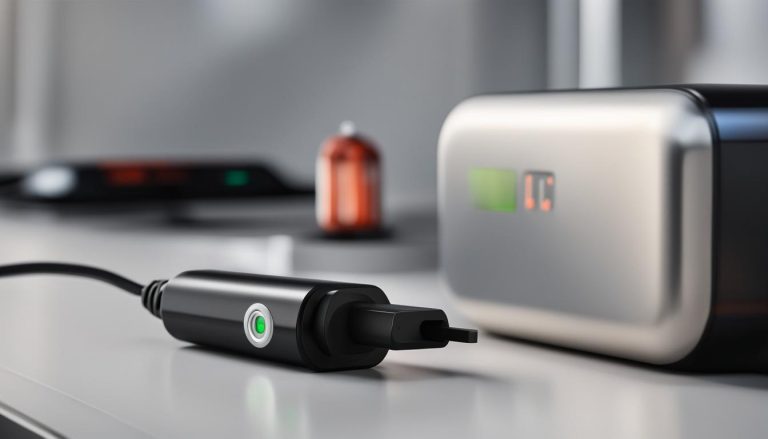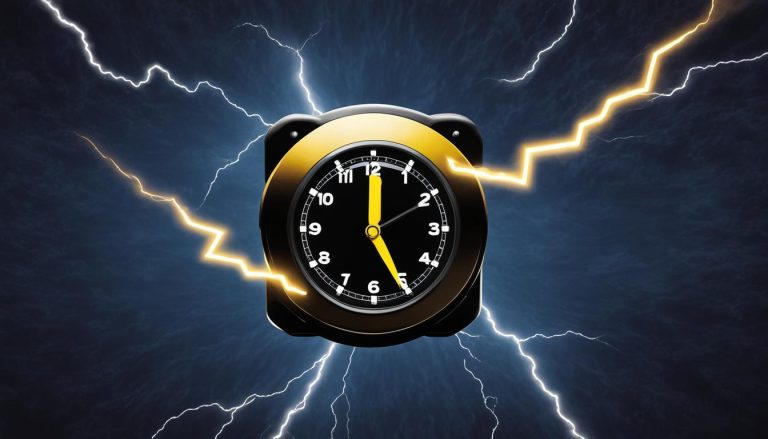Charge Time for Deep Cycle Battery – Get It Right
batterychargers.site and its partners may earn a commission if you purchase a product through one of our links
Are you wondering how long it takes to charge a deep cycle battery? Understanding the charge time and optimal charging practices for deep cycle batteries is essential for maximizing their performance and lifespan.
Deep cycle batteries are specifically designed for solar applications and can withstand repeated charging and discharging without damage. To ensure proper charging, it is important to know the different stages involved in the process—bulk stage, absorption stage, and float stage. The total charge time depends on factors such as the battery’s capacity, the power rating of the charger, and the efficiency of the solar equipment.
To calculate the charge time, simply divide the battery’s capacity by the amp rating of the charger. However, keep in mind that other factors, such as the amount of direct sunlight and the quality of the battery, can also affect the charging time.
Key Takeaways:
- Charging a deep cycle battery involves multiple stages, including bulk charging, absorption charging, and float charging.
- The charge time depends on factors such as the battery’s capacity, charger’s power rating, and efficiency of solar equipment.
- Proper charging is important for safety and to extend the lifespan of the battery.
- Follow the manufacturer’s instructions for charge rates and consider investing in high-quality deep cycle batteries and solar power systems.
- Calculate the charge time by dividing the battery’s capacity by the amp rating of the charger.
Understanding Deep Cycle Batteries and Charging Methods
Deep cycle batteries are designed to provide sustained and reliable power, making them ideal for applications such as powering RVs, boats, and solar energy systems. Unlike automotive batteries that only provide short bursts of power, deep cycle batteries can be discharged to low levels without needing a jump start.
When it comes to charging deep cycle batteries, there are several methods to choose from:
- Solar Power: Harnessing the energy of the sun, solar panels are a popular choice for charging deep cycle batteries. They convert sunlight into electricity, which is then used to charge the battery. Solar charge controllers are used to regulate the charging process, ensuring efficient and safe charging.
- Grid Power: Connecting the deep cycle battery to a conventional power outlet is another charging method. This is convenient when a reliable grid power source is available. However, it’s important to use a suitable charger and monitor the charging process to avoid overcharging or damaging the battery.
- Alternator and Starter Battery: In certain applications such as marine vessels or RVs, the deep cycle battery can be charged using the vehicle’s alternator and starter battery. This method allows the deep cycle battery to receive power while the engine is running, enabling charging even when off-grid.
Regardless of the chosen charging method, it is important to consider several factors that can affect the charging time of deep cycle batteries:
- Battery Capacity: Larger capacity batteries take longer to charge compared to smaller ones. To calculate the approximate charging time for a deep cycle battery, divide its capacity (in ampere-hours) by the charging current (in amperes).
- Charge Rates: It is recommended to charge deep cycle batteries at a moderate rate to ensure efficient and safe charging. High charge rates can lead to excessive heating, while low rates may result in incomplete charging.
- Battery Maintenance: Regular maintenance, such as checking water levels for lead acid batteries, can optimize the charging process and extend the lifespan of deep cycle batteries.
- Temperature: The charging time can be influenced by the ambient temperature. Extreme temperatures, either hot or cold, can affect the efficiency of the charging process. Some battery chargers include temperature compensation features to adjust the charging voltage accordingly.
By following these guidelines and considering the factors that can impact the charging time, you can ensure optimal performance and longevity for your deep cycle battery.
Charging Tips for Deep Cycle Batteries
“To maximize the lifespan of your deep cycle battery and optimize its charging process, here are some tips to keep in mind:”
- Choose the appropriate charging method that suits your specific application and energy needs.
- Use a charger or charge controller specifically designed for deep cycle batteries to ensure proper charging and avoid overcharging.
- Monitor the charging process regularly to prevent any issues and ensure timely disconnection once the battery is fully charged.
- Perform routine battery maintenance, including checking and adjusting water levels for lead acid batteries, to optimize the charging efficiency.
- Store the battery in a cool and dry place when not in use, as extreme temperatures can affect its performance and charging ability.
How Long Does it Take to Recharge Marine Batteries?
Recharging marine batteries typically takes around 4-6 hours to reach 80% charge. The exact time depends on factors such as the battery quality, the type of charger used, and the current being supplied. Proper battery maintenance and choosing the right battery can help reduce charging time.
The external temperature also plays a role, with colder temperatures potentially requiring reduced current for charging. It is important to avoid overcharging deep cycle batteries, as this can lead to decreased performance and potential safety hazards. Depending on the type and maintenance of the battery, a deep cycle battery can last several months without charging.
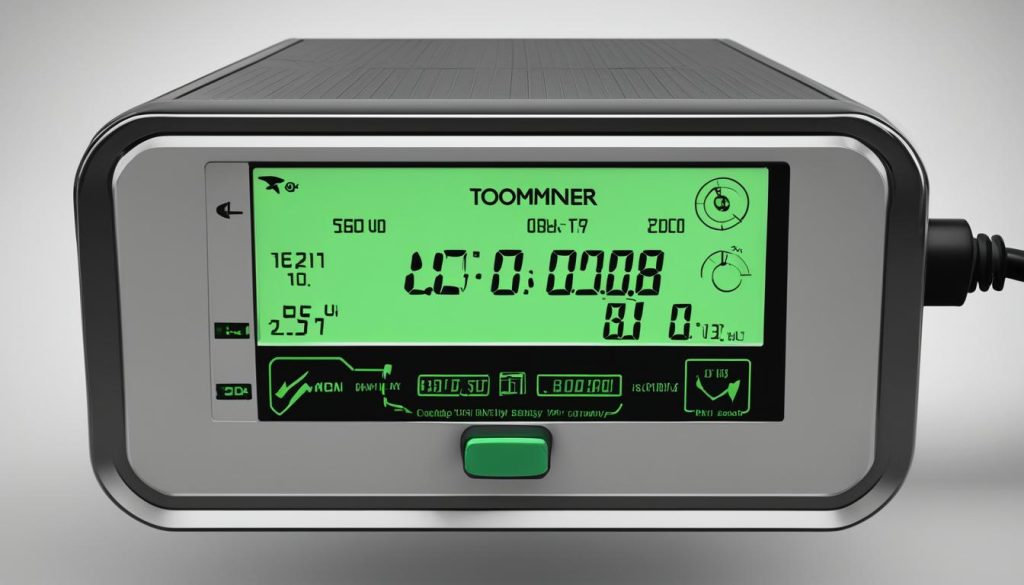
It’s essential to understand the ideal battery charging time and the duration a deep cycle battery can last without charging to ensure optimal performance and longevity.
Best Practices for Charging Deep Cycle Batteries
To charge a deep cycle battery efficiently, it is crucial to follow the best charging practices. These practices can maximize the battery’s performance and extend its lifespan. One of the key recommendations is to use a charger or charge controller specifically designed for deep cycle batteries. These chargers have multiple charge stages, including bulk charging, absorption charging, and float charging.
Following the manufacturer’s instructions for charge rates is essential to avoid overcharging or undercharging the battery. It is crucial to select the appropriate charge rate setting to ensure optimal charging. This will help maintain the battery’s health and performance over time.
In addition to using the right charger and following charge rate instructions, proper battery maintenance is necessary for efficient charging. For lead acid batteries, regularly checking and maintaining the water levels is crucial. This ensures that the battery operates at its optimal level and avoids any potential damage or performance issues.
Maintaining a stable temperature is also important for charging deep cycle batteries efficiently. Extreme temperature fluctuations can adversely affect the battery’s performance and longevity. Ensure that the battery is kept in a suitable environment where the temperature remains within the recommended range.
By investing in high-quality deep cycle batteries and solar power systems, you can further enhance the charging efficiency and overall performance. These high-quality products are designed to provide reliable power, ensuring that your battery is efficiently charged and ready to meet your energy needs.
FAQ
How long does it take to charge a deep cycle battery?
The charge time for a deep cycle battery depends on its capacity and the power rating of the charger. To calculate the charge time, divide the battery’s capacity by the amp rating of the charger. Factors such as the efficiency of the solar equipment and the amount of direct sunlight can also affect the charging time.
What factors affect the charging time of a deep cycle battery?
The charging time of a deep cycle battery can be influenced by various factors such as battery maintenance, charge rates, temperature, and the type of charger being used. These factors can impact the efficiency of the charging process and should be considered to maximize performance and lifespan.
How long does it take to recharge marine batteries?
Recharging marine batteries typically takes around 4-6 hours to reach 80% charge. The exact time can vary based on factors such as battery quality, charger type, and current supply. External temperature also plays a role, with colder temperatures potentially requiring reduced current for charging.
What are the best practices for charging deep cycle batteries?
To charge a deep cycle battery efficiently, it is recommended to use a charger or charge controller specifically designed for deep cycle batteries. Follow the manufacturer’s instructions for charge rates to avoid overcharging or undercharging the battery. Proper battery maintenance and maintaining a stable temperature can also help maximize charging efficiency and extend the battery’s lifespan.

